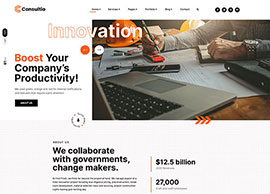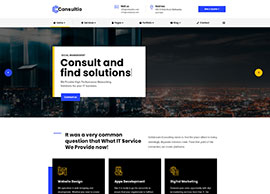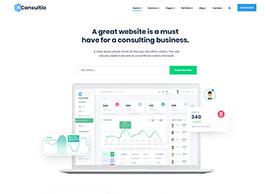 This article made the cover and was featured in the May June issue of Mailing Systems Technology Magazine.
This article made the cover and was featured in the May June issue of Mailing Systems Technology Magazine.
Everyone has to have one claim to fame in life. Mine is that I am the (self-proclaimed) top expert on mailing systems in the United States. I have not been able to tell anyone about this until now because there was never the right time or place. You try to bring this up to someone at a party and watch them suddenly need to “get a drink refill”. If you are reading this article it is because you are actually interested in mailing equipment or are looking to replace a system where hopefully my background and opinions can be helpful.
The reason that I can make this claim is that I run the only mail audit and recovery firm in the US (That we have found) and focus solely on helping the largest companies to procure mailing equipment. Prior to starting my firm, I worked for one of the largest vendors directly helping over 3,000 entities.
The purpose of this article is to give you the background needed to know what to look for and the questions to ask when selecting the right mailing system for your organization. It is written without any vendor affiliations and is designed to give you an unbiased view of your options. This guide will explain the ten core questions that should go into your decision for the optimal system.
1. Recommended Mail Volumes – What type of system do you need based on your current and projected mail volumes
Mailing equipment is designed for specific usage levels. This is important for three reasons:
- Service – The performance of the unit could decrease if the machine is used far above these recommended volumes.
- Over Buying – If your volumes are much lower than those recommended, you could be paying more for a machine than you need.
- Productivity – All units are designed to process a specific mail volume efficiently. If volumes are too high, it may not be productive to tie up labor with a slower system. If volumes are too low, the unit may be too complex for the needs of the application.
It is important to note that the recommended mail volumes and descriptions on the attached table are defined by Postal Advocate Inc. and not by the manufacturers.
2. Machine Speed – How fast do you need the system to process the mail to make it efficient?
This is the manufacturers rated speed of the unit and shows how many envelopes can be processed in one minute. No one runs a machine at the manufacturers rated speed except professional operators who are constantly feeding same size material without needing to start and stop. You should expect speeds of 25-50% less.
3. Envelope Feeding and Stacking – How do you need the mail fed into and out of the system?
The way the machine feeds mail into the unit is one of the most important aspects because it determines the level of equipment and its ease of use.
- Hand Feed – Push in and Pull Out – Most basic Low Volume units – Speed range 15-25 per minute
- Hand Feed – Push from the left and the machine feeds it through the unit. Low and Mid Volume units. Speed rage 25-65 per minute.
- Automatic Feed – This means that you can put a pile of mail onto the stacker and the machine will pull them into the unit. These units are much easier and faster that Hand Feed and are designed to process higher volumes. The differentiators of Automatic Feed Systems is how they work. Lower volume units will require the operator use side guides to set the mail where High volume units will have automatic alignment. Automatic alignment is especially helpful when you have an internal scale system because it lets you run different size and weight letters and flats together. Most Mid and High volume Automatic Feed Systems have this option.
- Drop Stacker –Most common exit option for Low to Mid volume applications.
- Power Stacker – Exit option for High volume applications. These stackers typically have a conveyor and a pressure wheel (to improve sealing) and can hold up to 500 finished mail pieces before needing to be emptied.
4. Envelope Sealing – Do I need the system to seal envelopes and how are they to be prepared prior processing?
It is very time consuming to do seal envelopes manually, not to mention your tongue can get sore. I have heard (but cannot verify) that each envelope is 1-17 calories as well. All mailing systems in the Mid and High category will have sealing come standard and it is option on many in the Low bucket.
The main questions with sealing systems are how the mail needs to be prepared prior to being sealed. This is especially important with Automatic Feed systems that process large quantities.
- Flaps Closed Sealing – The flaps are down just like they came in the box of envelopes. The system will open the piece slightly and have it run under its brush/sponge to wet the piece. Because it is trying to seal every piece, it is important to check that you do not have envelopes that are already sealed because they could rip or get jammed. Pieces sealed prior to processing should be run together with the sealer turned off.
- Flaps Open Sealing – Flaps open means that the envelopes flaps are stacked on top of each other. This option is only available with High Volume Automatic Feed machines and is becoming much less popular. The benefit of this type of sealing system is you can run sealed and unsealed mail together.
- Flaps Open and Closed Sealing – Some High Volume Automatic Feed Mailing Systems can seal envelopes with the flaps open or closed. This is great flexibility for companies with different types of mail coming down from multiple departments.
5. Meter Tapes – Are there a lot of pieces that are too big to fit into the system and will require meter tapes?
There are frequent times when you will need to run mail or packages that are too thick to fit into the machine. All vendors provide meter tapes that can be run through the unit. As a rule of thumb, the bigger the unit, the less expensive the tapes become because they are bought in higher quantities.
- Strip Tape Sheets –Low Volume Mailing Systems will use tape sheets that are run through the machine like an envelope. These tape sheets have 2 to 4 places to print postage. These tapes are self-adhesive and easy to apply. Cost per Tape (Per imprint): $.05-.13
- Strip Tape Dispenser – Most Mid and some High volume units will have a separate tape dispenser where they can be created at the touch of a button. These tapes come two to a strip that is perforated in the middle and can be rerun again on the other side. Strip tapes are self-adhesive and easy to apply. Cost per Tape (Per imprint): $.06-.08
- Roll Tape – Many Mid/High volume automatic feed mailing systems will have a roll tape dispenser that will cut the tapes to the proper size. This is easier than needing to load tape strips into a dispenser and rerun the back sides to maximize their use. Self-Adhesive Cost per Tape (Per imprint): $.02-.04. Some High volume units will have an option for gummed back tape that comes out wet and the cost per tape is about $.01.
6. Weighing – How are you going to weigh and rate different sized pieces?
Most mailing systems have a scale that is connected in some way. They make it easy to calculate the right amount of postage and will have most USPS rates.
- 2-10 LB External Scale – These are the most common scale sizes. Many are built right onto the mailing system for space savings and simplicity.
- 15-149 LB External Scale – These are for entities that have some package weighing requirements.
- Optional Internal Scale – This is a great option for entities that do a lot of mixed weight mail. The different size and weight pieces can be placed on the feeder and the unit will pull them in, assess their size (To determine if they are a letter or flat), weigh, rate, seal and meter the piece in one operation. This is much faster and more accurate than weighing and rating each piece. This option is available on many Automatic Feed Mailing Systems.
7. Postal Accounting – Do you need to track mail by department or cost center?
Many entities need to track their postage expense so it can be charged back to departments or cost centers. This means they need to know how much each group is spending so they can bill them back later. Here are specific accounting questions:
- How many accounts do you need to track?
- Are you only looking for a month end summary?
- Or do you need the details of every transaction?
- How do you need to access the data?
- From the screen of the mailing system or printed on a meter tape?
- With a connected printer?
- Having the machine connected to a PC or laptop?
- Accessed from the vendors website?
8. Additional Printing Capability – What else would I like the system to print?
Mailing systems have been able to do basic advertisement plates and inscriptions as long as I have been in the industry. The difference now is that with modern ink jet printing and new color capabilities, there is a lot more that can be printed at a much higher quality to help promote your message. It used to be that to customize any print, you needed to order plates or download from the vendor. Now higher end systems will allow you to create content and download it to your unit without the vendor charges and delays. Here are the typical items that can be printed:
- Meter Advertisement
- Postal Inscription
- Return Address
- QR Code or Custom Graphic
9. Space Requirements – Can the system fit in my space?
When deciding on a mailing system, it is imperative to check your space requirements prior to ordering.
10. Investment/Price – What is the total amount you will pay?
I left this one for last because there are several items you need to look at regarding the price of the unit.
- Buy vs. Lease? – Most entities will lease their mailing equipment because all of the services are included in one payment. I typically recommend this for Low and Mid volume units but High volume should consider both options.
- What is included? Make sure to know the pricing on the following and if they are included on the lease:
- Equipment
- Meter Rental
- Meter Resets
- Postage Advances
- Maintenance
- Scale Rate Changes
- What is the cost of supplies? This is typically meter ink and tape but could also include print head replacement.
- What are the added fees and terms? You should look at the cost for late charges, finance fees, loyalty plans and vendor replacement insurance because they can add up if you are not paying attention to them.
I hope these 10 questions make it easy for you the next time you need to order/renew mailing equipment for your organization. The key is to know the right questions to ask to get a system that fits your needs at the lowest cost of ownership.













































